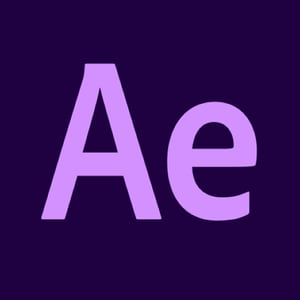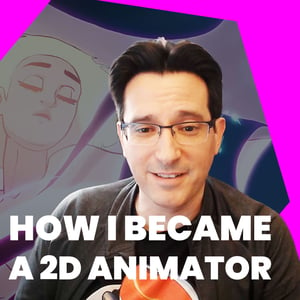
2D Animator Career
TABLE OF CONTENTS
What does a 2D Animator do?
Following a script and/or storyboard, 2D animators draw frame-by-frame sequential images that simulate the actions of a character, prop, or machine in a two-dimensional space. 2D animations can vary in length from a 5-second brand logo to a feature film, TV series, or 2D video game.
Most 2D animators at some stage during the course of their careers will work in all of these roles, and sometimes a combination of all on individual projects. Over time 2D animators tend to specialize in a particular style or genre that reflects their personal aesthetic.
On longer projects, animators will work in teams working with various roles such as storyboard artists, clean-up artists, and character artists.
2D Animator job description
A 2D animator works through a three-stage process (pre-production, production, and post-production) to create a sequence.
During the pre-production stage, they write the story, design characters, create a storyboard, choose a design style, and prepare the backgrounds on which the action will occur. The voice-overs are then recorded by actors based on the dialogue in the script.
In the production stage, the animators pull together all the elements to start animating the scenes. This includes initially animating rough sketches, then refining them to line drawings; layering the scenes against the backgrounds; matching the character visuals to the recorded dialogue, and compositing to final render.
At the post-production stage, animators will do a final visual clean-up, mix sound effects and music, integrate visual effects, and render all the elements together to create the finished work.
Role & responsibilities
- Liaising with writers, directors, and clients regarding the style, method, and execution of the animation to be produced
- Developing storyboards based on the script
- Preparing presentations of rough sketches for clients
- Creating models, drawings, and illustrations
- Designing frames and characters
- Choosing color palettes, style, and general look of the animation
- Establishing artwork for the backgrounds and layouts
- Setting up exposure sheets, divided into actions and timing, dialogues and music, animation layers, backgrounds, view perspective
- Drawing rough sketches and animate
- Illustrating keyframes and producing inbetweening
- Inking, coloring, and clean ups
- Integrating images, characters, etc into background graphics
- Syncing visuals with audio and voiceover tracks
- Preparing all animation elements for compositing, including delivering in set formats
- Enhancing animation with special effects at the post-production stage

How much does a 2D Animator make?
The average salary for a 2D animator is from USD $50,000 for entry-level animator jobs to USD $85,000 for a senior animation position. (Source: Payscale)
Skills required to become a 2D animator
There are many forms of animation — claymation, stop motion, pinscreen, cut-out, etc. — and animators continue to innovate with new materials, however, the basics of animation are taught in terms of character expression and movement.
A career in animation will pose lots of creative challenges and training in various techniques, the possibilities are endless and only limited by your imagination.
Film and game companies may look for the following skills in 2D animators:
- Training in 2D animation, both cel & computer graphics
- Ability to visualize abstract concepts
- Experience with storyboarding, clean ups & layout design
- Drawing ability, artistic mindset
- Visual storytelling
- Ability to draw in a variety of styles & genres
- Familiarity with a range of animation software & techniques
What software and tools do 2D Animators use?
The tools of a 2D animator can be as rudimentary as pen and paper, they can be paint and cels, they can be clay, they can be computer software, and a range of other props including puppets, models, flipbooks, etc. Regardless of the materials used to create 2D animation, it will invariably end up being edited and post-produced on a computer.

Harmony allows you to create palettes populated with an unlimited number of swatches which can be vector or bitmap colors depending on your preference

Adobe Photoshop is a raster graphics editor developed and published by Adobe for Windows and macOS. It was created in 1987 by Thomas and John Knoll

Adobe Illustrator is a vector graphics editor and design software developed and marketed by Adobe

Sketchbook is a raster graphics software app intended for expressive drawing and concept sketching also for making animations

Adobe After Effects is a digital visual effects, motion graphics, and compositing application developed by Adobe Inc

Flash Professional has been renamed Adobe Animate. This change more accurately represents Animate's position as the premiere animation tool for the web and more
A day in the life of a 2D animator
The daily responsibilities of an animator vary depending on the type of job you are working on. As with every other step in the pipeline, once you receive your assignment, research is key.
Following research, the artist then decides what techniques to use and starts blocking out the main poses of the object they're working on.
2D animators usually begin with rough sketches before refining them to line drawings. Once the story and voice-overs are locked in, they will layer their animation into the relevant scene/background and continue refining the movements and cleaning up their lines.
How to become a 2D Animator
“When it comes to finding animation jobs there is no secret to the formula. The formula is pretty well known: Work hard and have a solid plan for where you want to go.”
-Spectra, CG Spectrum 3D Animation Mentor & Senior Cinematic Animator (Uncharted 4: Hogwarts Legacy, A Thief’s End, Far Cry 6)
Practice makes perfect. When you are first learning, it takes some time to get your animations as smooth and precise as you would like. Repetition will eventually make the tedious aspects quick and natural, which will then let you focus on the more in-depth nuances and personality of your animations.
As mentioned before, research is key. Prepare yourself for a career in this field by spending time gaining knowledge of:
- The motion of humans, bipedal creatures, quadruped creatures, and animals
- Facial movement and portraying different moods
- Mechanical design
- Mechanical operations
- Weight and physics
Get the skills
Check out job ads at companies you want to work for—see the skills they’re hiring for, then build your skills! There are many courses with varying levels of support and interaction. To fast-track your education, CG Spectrum’s career training includes personalized mentorship from industry professionals so you can progress faster as an animator, and a specialized curriculum updated regularly to reflect industry standards.
Stay ahead of trends
Google online tutorials, webinars, conferences, publications, and local events to stay on top of trends and keep your skills fresh.
Animate you own projects
The best way to understand the nuances of animation is to create your own short projects. This helps showcase your skills and knowledge to potential recruiters.

Ready to Start Your Film & Games Journey?
Download our course guide to see how we can help you on your pathway to your dream career.Tips to break into the animation industry
Participate in competitions
Animation competitions are a great way to gain experience, and you’ll often get access to a rigged and modeled asset to practice. Use the final product in your portfolio. CG Spectrum runs regular challenges for students to practice working to a brief and a deadline.
Engage with communities
Building connections online is vital to getting your name and skills recognized and is a chance to interact with industry professionals who can offer advice or jobs.
Collaborate with peers
Do you know a modeler looking for someone to bring their latest asset to life? Or a lighting artist who’d love an animation scene to render? Collaborating with peers can be fun, and help you both create polished work for your portfolios.
Intern with a studio
Getting an internship with an animation company you want to work for is a way to get your foot in the door. This option is not viable for everyone, but can be an excellent way of gaining hands-on experience while networking at the same time.

Industry Pathways
In this episode, you'll hear from Sykosan, mentor of 2D Animation at CG Spectrum. Sykosan started out in Architecture before moving into 3D Animation, and finally deciding to focus fully on 2D Animation, where he's had great success and worked on some career-affirming projects with his dream collaborators.


